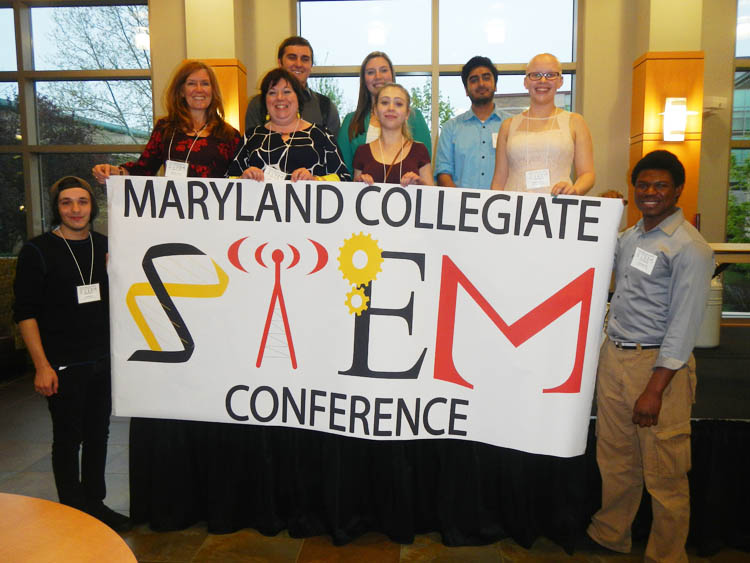
From Harford Community College:
Harford Community College recently joined together with other Maryland colleges to present the 2nd annual Maryland Collegiate STEM Conference – a two-day, statewide conference about science, technology, engineering, and mathematics-related topics. The first day was dedicated to the professional development of students, an opportunity that is unique to this conference, while the second day featured sessions that were focused toward STEM faculty.
Six HCC faculty from the Science, Technology, Engineering, and Mathematics (STEM) and Behavioral Studies Divisions as well as 10 students from the Science Club, biotechnology class, and the Sustainable Growth Challenge Team attended the conference. The faculty and students participated in three presentations—Passport to Harford, Is It Time to Make a Change? and DNA Barcoding of the Spotted Quill. In addition, Harford was a conference silver sponsor, and HCC Associate Professor Tami Imbierowicz served on the planning committee.
Passport to Harford (P2H), a student-faculty collaborative project, was submitted through the Maryland Sustainable Growth Challenge. The Harford student team presented a summary of their proposal, Passport to Harford, which tied for first place in the challenge. P2H proposes to establish an interconnected system of bike paths and business connections linking four communities in Harford County. P2H was recognized for addressing the triple bottom line of sustainability – economic opportunity, environmental protection, and social justice – and in demonstrating the many benefits to all stakeholders and residents.
HCC Associate Professor Supawan King presented Is It Time to Make a Change?. Engaging students in the classroom has been shown to increase student retention and success. King discussed different in-class activities she has used to engage students in better understanding new concepts in math classes such as trigonometry, calculus I and II, and differential equations. A variety of collaborative activities implemented in courses including group work, lab-based activities, and technology assignments were shared as well as a comparison of student performance.
HCC biotechnology students were involved in the DNA presentation. DNA barcoding is used to identify a species and differentiate it from other living organisms using DNA sequencing technology. In this experiment, DNA extraction, PCR, gel electrophoresis, and DNA sequencing were performed as per the methods of the Cold Spring Harbor Laboratory DNA Learning Center. DNA barcoding was used to determine the sequence of the rbcL gene in the Spotted Squill, Ledebouria socialis ‘violacea,’ a perennial from South Africa. The students worked with a faculty mentor and presented a poster showcasing the findings.
Hosted by Frederick Community College, the following community colleges were represented at the conference: Anne Arundel, Baltimore City, Baltimore County, Carroll, Cecil, Chesapeake, Frederick, Harford, and Montgomery. Four-year institutions represented at the conference included Coppin State University, Hood College, Johns Hopkins University, Mount St. Mary’s University, Towson University, University of Charleston, University of Maryland at Baltimore, University of Maryland – Baltimore County, University of Maryland at College Park, and University System of Maryland at Hagerstown. Other partners include Cengage Learning, Howard Hughes Medical Institute, Ludesco and Pearson Education.



Leave a Reply
You must be logged in to post a comment.